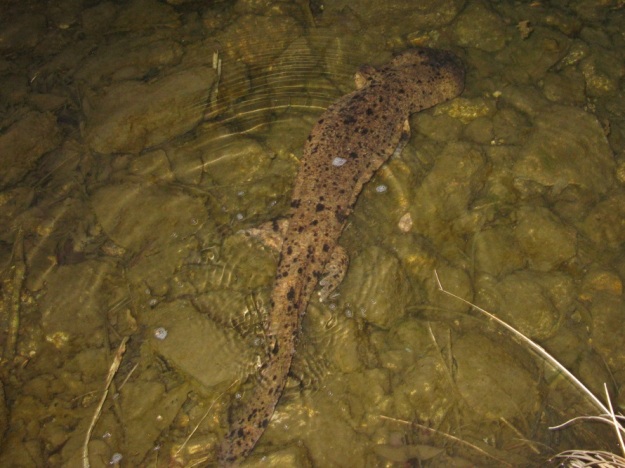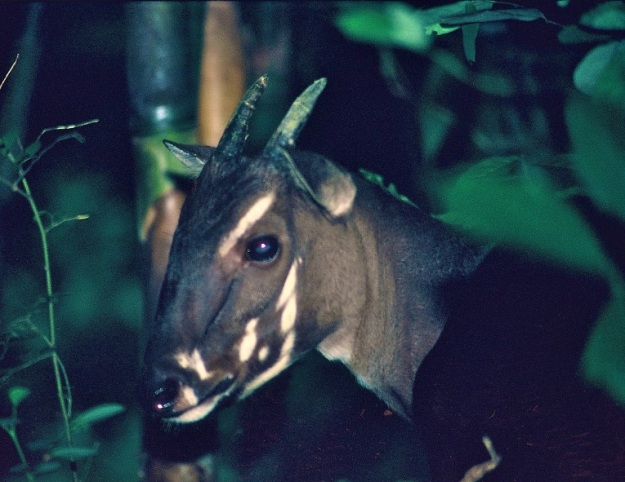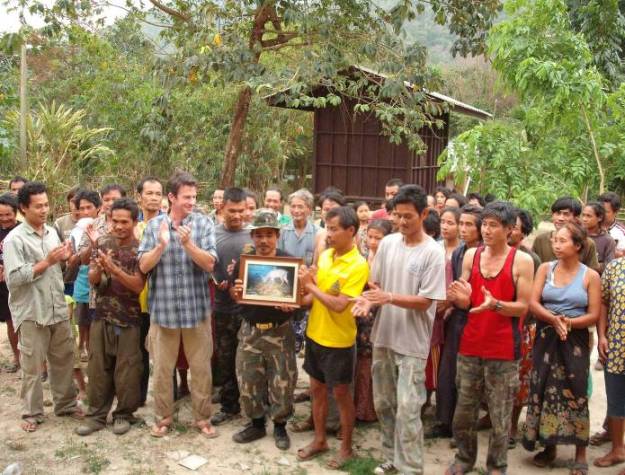This post features three manuscripts which look at reducing human–wildlife conflicts and managing species.
First, Toshifumi Minamoto discusses his paper ‘A basin-scale application of environmental DNA assessment for rare endemic species and closely related exotic species in rivers: a case study of giant salamanders in Japan‘ by Sou Fukumoto, Atushi Ushimaru and Toshifumi Minamoto.
The identification of DNA fragments sampled from water samples (environmental DNA: eDNA) has become a popular technique for rapidly determining the distribution of underwater macro-organisms. In this study we presented basin-scale eDNA surveys for the Japanese giant salamander (Andrias japonicas), which is endemic to Japan, and the Chinese giant salamander (A. davidianus), an exotic species, in Katura River in Japan. Four seasonal surveys at 37 sites were conducted, and the DNA of endemic and exotic species was detected at 25 and 9 sites, respectively. The overall eDNA detection sites corresponded with the results of an earlier capturing survey, but the DNA of the exotic species was found beyond the limits of earlier surveys. Using eDNA to monitor underwater species requires less time and effort than traditional surveys, so a wide-ranging survey can be conducted rapidly. eDNA surveys, combined with conventional population surveys, will provide valuable information to protect rare endemic species and to monitor the invasion of exotic species.

A Japanese giant salamander in a natural river. Photo credit: Kei Uchida.
Second, Nicholas Wilkinson discusses his paper ‘Interview-based sighting histories can inform regional conservation prioritization for highly threatened cryptic species’ by Samuel T. Turvey, Cao Tien Trung, Vo Dai Quyet, Hoang Van Nhu, Do Van Thoai, Vo Cong Anh Tuan, Dang Thi Hoa, Kouvang Kacha, Thongsay Sysomphone, Sousakhone Wallate, Chau Thi Thanh Hai, Nguyen Van Thanh and Nicholas M. Wilkinson.
Saola are unique and elegant forest antelopes endemic to Lao and Vietnam and have so far evaded any attempts to survey them. They are also critically endangered and one approach to saving the species relies on finding population strongholds.
Because field surveys appeared impossible, for our study, we asked local people. Student teams (from Vinh University) interviewed householders around three key landscapes about the last time they’d seen saola or any other ungulate species. Such imperfect information is all we have and sadly its use doesn’t even let us off the statistics. In fact last-sighting data are quite challenging to analyse and methods continue to be developed.
The slope of the saola’s last-sighting history curve was significantly flatter than that for most other ungulate species, suggesting lower abundance, faster decline, or both. At a Lao site, considered a likely stronghold, people had seen saola no more recently than at better known Vietnamese sites, even when sightings of commoner species were used to control for survey effort. However our Optimal Linear Estimation analysis gave no evidence of extirpations.
These results suggest that there may be no strongholds but that individual saola may survive in many landscapes. Every one is precious.

A young saola (Pseudoryx nghetinhensis) briefly held captive in Ha Noi in 1994. Photo credit: JC Eames ©.
Lastly, Robert Steinmetz discusses his paper ‘Can community outreach alleviate poaching pressure and recover wildlife in South-East Asian protected areas?’ by Robert Steinmetz, Surasak Srirattanaporn, Jirati Mor-Tip and Naret Seuaturien. You can read another post by Robert here: Applied ecologists can do better conservation by working with locals.
Tropical countries are experiencing an unprecedented crisis of wildlife poaching that is driving numerous species to extinction, yet there is little scientific attention on human behaviour change for stemming poaching. This study used psychology principles to design a community outreach program aimed at reducing poaching in a reserve in Thailand. Outreach aimed to: build trust, raise awareness, provide motivation, offer simple opportunities for action, boost confidence to act, and generate social pressure against poaching – behaviour change is promoted when these conditions converge. From 2008–2011 we conducted 116 outreach events, focusing on farmers, schools, and local leaders. Poaching pressure dropped 76%. Questionnaire surveys revealed 88% of villagers perceived a reduction in poaching; the top reason given was park outreach. In response to safer conditions, populations of 5 hunted mammal species increased throughout the park. Patrol effort was unrelated to observed trends in either poaching or wildlife populations. The weight of evidence thus points to outreach as the main driver of a biologically significant decline in poaching that initiated the recovery of hunted species. This is one of the first demonstrations that scientifically designed and proactive park outreach activities might suppress poaching and initiate wildlife recovery in South-East Asia.

Giving credit where it is due. Ecologists working in Kuiburi National Park, Thailand, discovered that sambar deer were abundant in the homelands of indigenous people living inside the park. Sambar were rare elsewhere in the park. The local people had instituted rules against hunting sambar, enforced through social norms. Here the park is officially recognizing this conservation achievement. Image taken from ‘Applied ecologists can do better conservation by working with locals’. Photo credit: Robert Steinmetz.
https://jappliedecologyblog.wordpress.com/2016/02/04/managing-species-and-reducing-human-wildlife-conflicts/

Comments